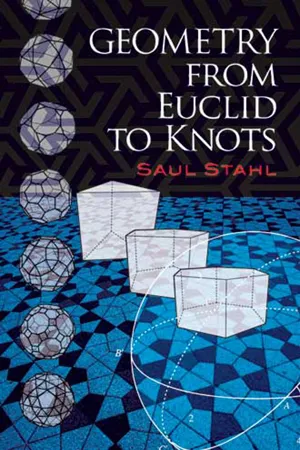
- 480 pages
- English
- ePUB (mobile friendly)
- Available on iOS & Android
Geometry from Euclid to Knots
About This Book
Designed to inform readers about the formal development of Euclidean geometry and to prepare prospective high school mathematics instructors to teach Euclidean geometry, this text closely follows Euclid's classic, Elements. The text augments Euclid's statements with appropriate historical commentary and many exercises — more than 1, 000 practice exercises provide readers with hands-on experience in solving geometrical problems.
In addition to providing a historical perspective on plane geometry, this text covers non-Euclidean geometries, allowing students to cultivate an appreciation of axiomatic systems. Additional topics include circles and regular polygons, projective geometry, symmetries, inversions, knots and links, graphs, surfaces, and informal topology. This republication of a popular text is substantially less expensive than prior editions and offers a new Preface by the author.
Frequently asked questions
Information


Table of contents
- Cover
- Title Page
- Copyright Page
- Dedication
- Contents
- Preface to the Dover Edition
- Preface
- 1 Other Geometries: A Computational Introduction
- 2 The Neutral Geometry of the Triangle
- 3 Nonneutral Euclidean Geometry
- 4 Circles and Regular Polygons
- 5 Toward Projective Geometry
- 6 Planar Symmetries
- 7 Inversions
- 8 Symmetry in Space
- 9 Informal Topology
- 10 Graphs
- 11 Surfaces
- 12 Knots and Links
- Appendix A: A Brief Introduction to The Geometer's Sketchpad®
- Appendix B: Summary of Propositions
- Appendix C: George D. Birkhoff's Axiomatization of Euclidean Geometry
- Appendix D: The University of Chicago School Mathematics Project's Geometrical Axioms
- Appendix E: David Hilbert's Axiomatization of Euclidean Geometry
- Appendix F: Permutations
- Appendix G: Modular Arithmetic
- Solutions and Hints to Selected Problems
- Bibliography
- Index